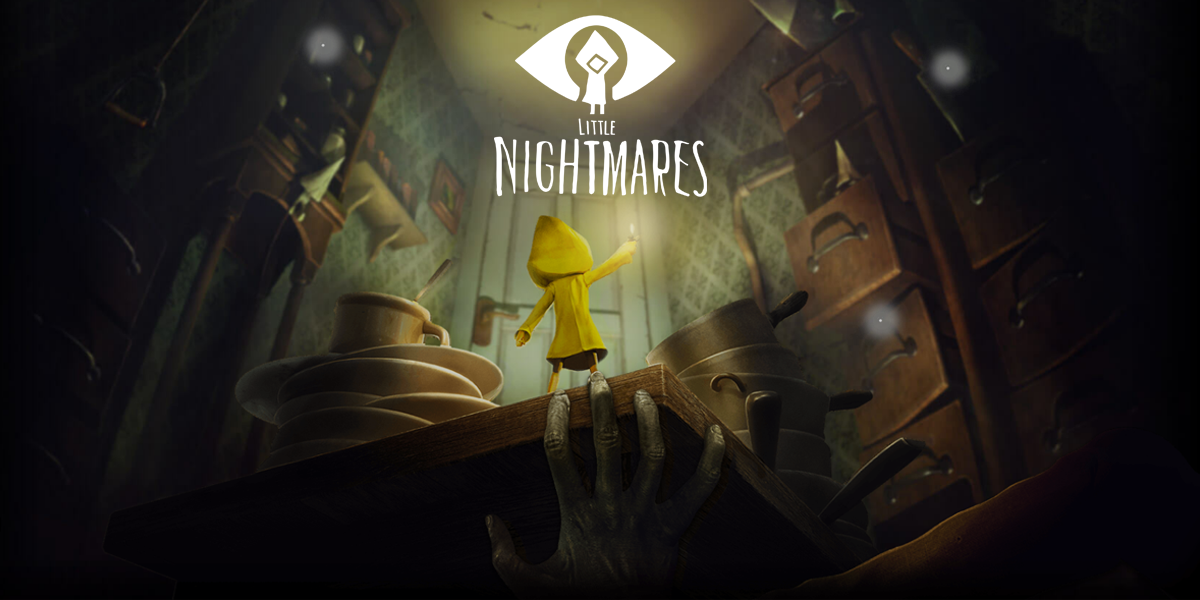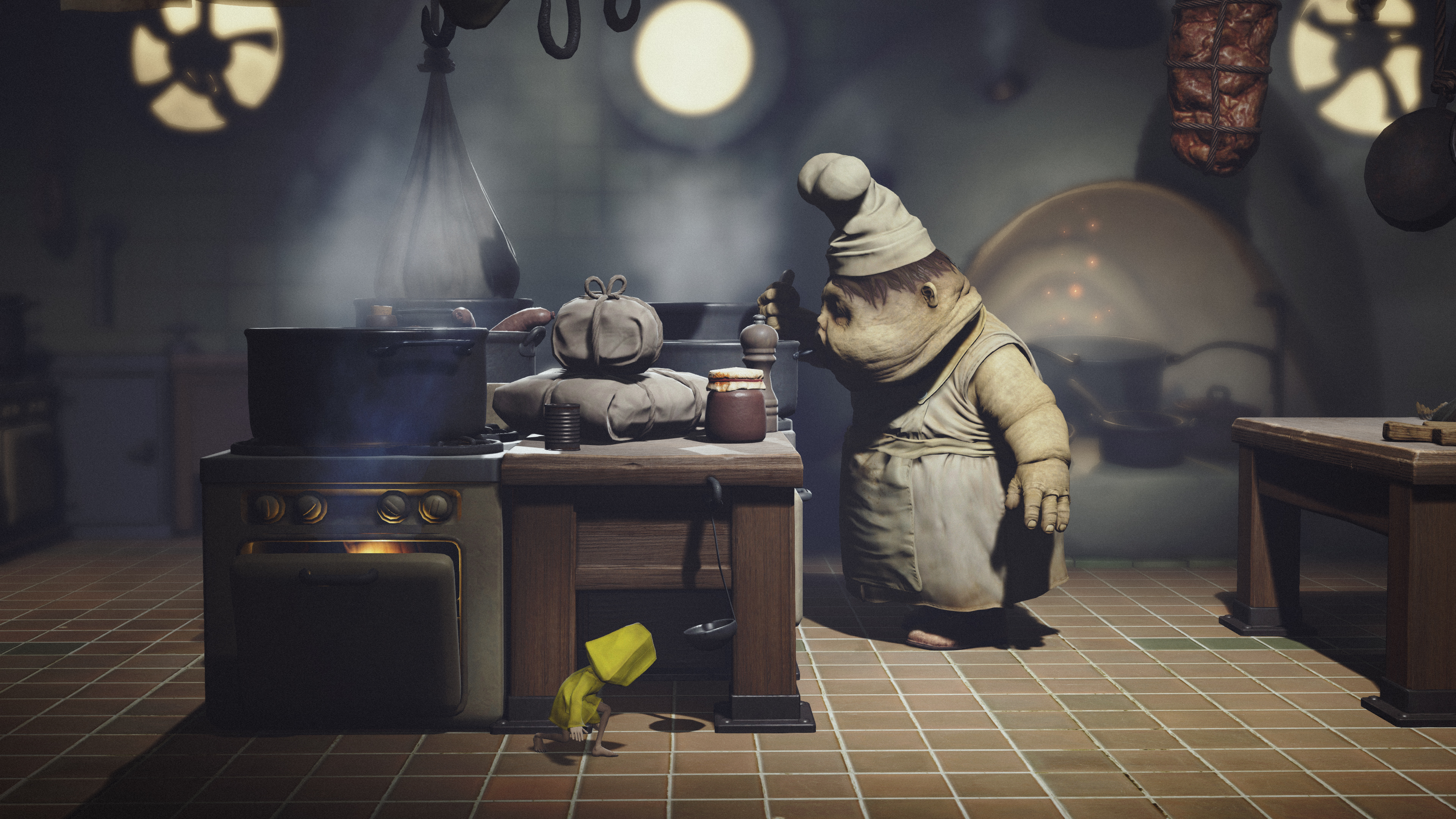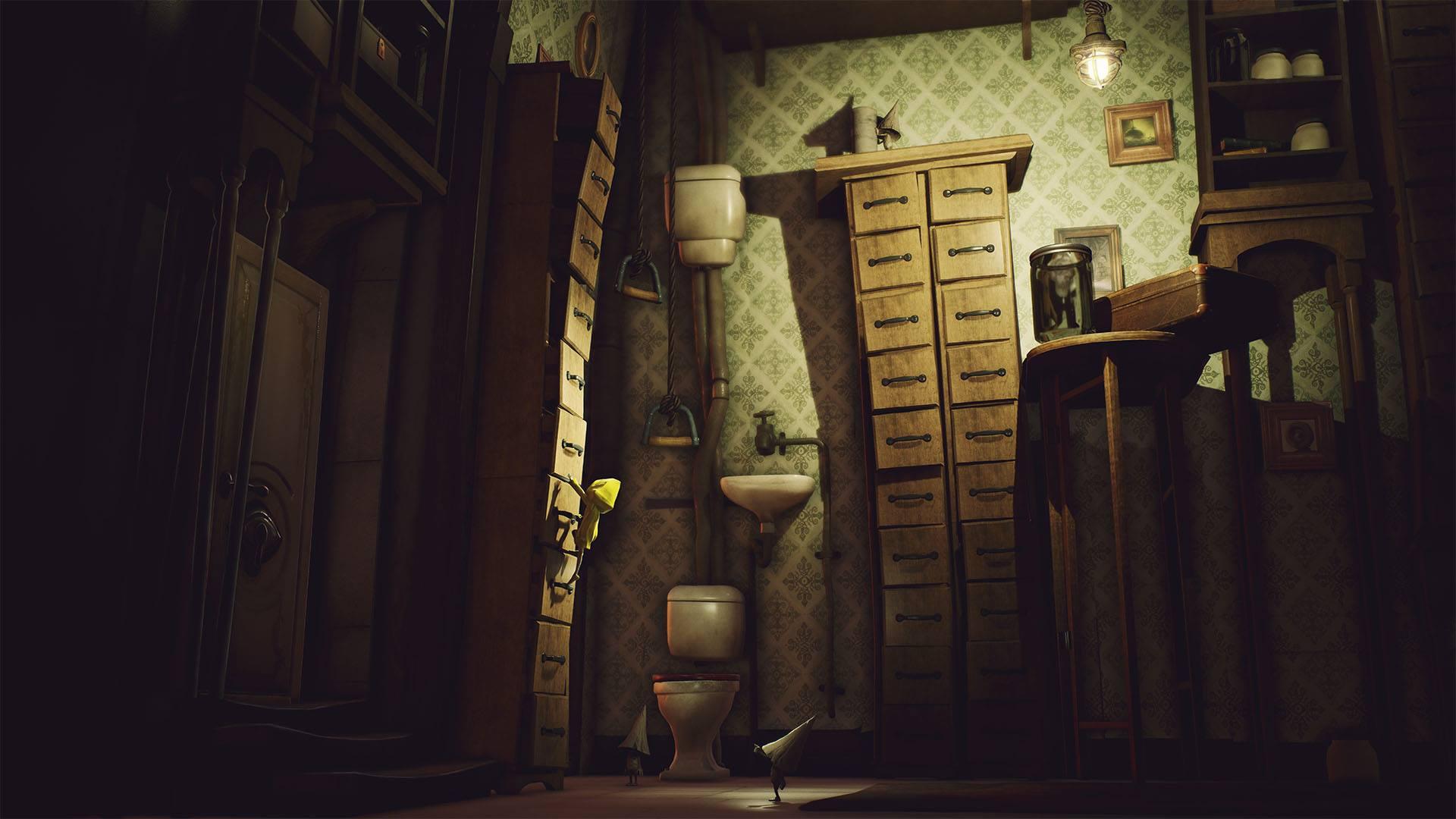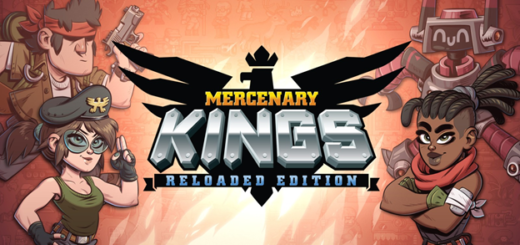LITTLE NIGHTMARES Review

It wasn’t too long ago that I watched Studio Ghibli’s THE SECRET WORLD OF ARRIETTY for the first time, during which I was overcome by the unshakeable feeling that this film’s universe would be better suited for a video game. For those not in the know, the 2010 anime tells the story of a young, sickly boy who befriends a Borrower, an ant-sized girl who lives under the floorboards of his new home. At night, Borrowers leave the safety of their dwellings and make their way into their neighbor’s kitchen, embarking on a nightly quest to retrieve a cube of sugar or other small belongings that are certainly not going to be missed. It’s undeniably charming, and quite thrilling to boot. The reason I bring this up is because Tarsier Studios’ LITTLE NIGHTMARES is the closest thing to an interactive iteration of this very same story. Playing as a tiny girl, you sidescroll your way through a complex labyrinth of puzzles and treacherous environments, all the while being chased by towering human foes. After hearing of this concept, I was ecstatic. This was exactly the game I was looking for. A beautiful platformer the likes of LIMBO, in which my quest takes me through the terrifying caverns of human gluttony. Little did I know that this tiny nightmare would also be a little underwhelming.
It’s not often that I say this about a platformer, especially since most of them are indie ventures a la BRAID or SUPER MEAT BOY, but LITTLE NIGHTMARES is one of the prettiest games I’ve played on the latest generation of consoles. It might not entertain the photorealism of a Naughty Dog game or the scale of a Rockstar release, but Tarsier’s art style is so singular and so distinct that it almost warrants the cost of admission alone. If you’re even remotely fascinated by the abject, or a Burtonesque reimagining of SPIRITED AWAY, then LITTLE NIGHTMARES is a guaranteed must-buy. This is the type of aestheticization I’m looking for in games. It not only further elevates the medium by distancing itself from the form of cinema, but allows for a certain expressionism that is rather difficult to realize on camera. What’s more, the disturbing, fear-inducing aesthetics at play are just too mature for a marketable animated film, too expensive for a live action outing, but suit themselves perfectly for the demographics that consume the adrenaline rush of interactive gaming. From dimly-lit rooms to towering ceilings, LITTLE NIGHTMARES channels the art direction of German expressionism, and yet becomes entirely its own thanks to its commitment to the macabre.

Kinda reminds me of BÖSE NACHBARN
Having said all that, Tarsier spent so much energy on the visual polish of its game that it stumbles when it comes time to actually play it. I’m willing to excuse the simplicity of its puzzle design by default. Save for the aforementioned BRAID or SUPER MEAT BOY, modern platformers have never been particularly challenging. What I’m not willing to excuse is its structural design, especially in the early levels. For starters, LITTLE NIGHTMARES doesn’t have a tutorial of any sort. It’s rather learn-as-you-go, which would be fine if it would remain beholden to the button prompts of its ancestors. But there are a couple things it switches up. For starters, LITTLE NIGHTMARES has a sprint button. Unsure of how to outrun an enemy early in the game, a prompt eventually informed me that holding down square enables my sprint. What bothers me is the fact that I have to lose in order to learn LITTLE NIGHTMARES’ controls. For a platformer, that’s a rather unforgivable gaffe, doubly so when you consider how unusual it is to have square be the default sprint button. The first control I discovered when playing the game was that circle turns on my lighter, a function I was excited to employ, but never ended up needing. Why give me this skill if it’s not essential to my survival? Add to that some uneven input responses and wobbly controls, and you have yourself somewhat of a platforming hodge-podge.
LITTLE NIGHTMARES gameplay isn’t bad, per se. On the contrary, it’s actually extremely stimulating. Solving puzzles is infinitely rewarding, and much like in my last game review for HORIZON: ZERO DAWN, there is something extremely fulfilling about outrunning an enemy that’s five times your size. Each of the game’s acts features a clear villain, and eluding them provides an effective goal to work towards. From a terrifying blind man with long, spindly arms, to a group of obese chefs, to a singing lady in kabuki dress, each encounter is aesthetically different, but rather identical in execution. For the most part, players hide under counters, climb to hard-to-reach places, and otherwise use their small size to maneuver past foes. I appreciate that LITTLE NIGHTMARES manages to function as a thrilling horror game without any jump scares or cheap tricks. As players, we remain aware of our enemies, their abilities and how we can outsmart them. What doesn’t sit so well is why any of this is happening. Early on, it’s rather easy to read LITTLE NIGHTMARES allegorically. Whether we want to digest it as a metaphor for bullying, adolescence, or coming-of-age is in the eye of the beholder, but the game’s three antagonists share very little thematically.
I don’t understand why the blind man inhabits the same world as the chefs and the overweight customers they feed. It makes little sense why the woman in the kabuki dress is part of this universe at all. Why does she seem to have powers over me that others don’t? Worst of all, the final boss fight desperately relies on my knowledge of classic gaming tropes to justify its premise, and not much else. LITTLE NIGHTMARES never establishes that a mirror might be something I could use as a weapon, so to shoehorn it into the final act is cheap to say the least. The same applies for the throw function. When buttons are just out of reach, your character can pick up objects and use them as projectiles, something the game never teaches you, but expects you to learn. The only indication that this is possible is that your character will slightly tilt their head in the direction of the button IF you’re holding a projectile.
The problem is that I want to praise the game for avoiding tutorials and text prompts as much as it can, but this DIY learning isn’t polished in the same way THE WITNESS (a far more complex game, mind you) is. Trial-and-error is great when it expects you to work with previously established concepts, but Tarsier’s take on this concept is more sink-or-swim than anything else, throwing the manual at you but not teaching you how to read it. LITTLE NIGHTMARES doesn’t suffer from these problems constantly, but when they do show up, they bog down the thrill of the chase. And that is what Tarsier Studios’ release really is: a game of cat and mouse, more so than its contemporaries.

DELICATESSEN is a good movie
Thinking back to THE SECRET WORLD OF ARRIETTY, I am relieved that a game in its ilk has finally been realized. There is something extremely charming about navigating an action-figure sized person through a larger-than-life environment. If any developer were to expand this concept, I’d push for a more open-world approach. Maintain the aesthetics of traditional platforming, but giving players a large, interactive environment could be extremely engaging. Tarsier Studios clearly invested form over function here, and although their game is a visual delight with thrilling, adrenaline-laden puzzle solving, its story feels rather obtuse (and that’s coming from someone who loved INSIDE). I don’t have a problem with the abstractions that are front and center in LITTLE NIGHTMARES’ narrative. I appreciate that it instantly throws me into the horrors of its world. The uncertainty of my backstory is delightful. I love that the ending is alluded to earlier on in the game. And I appreciate that the title itself is somewhat of a red herring due to the game’s stylistic predilections. But what I can’t forgive is that Tarsier Studios expects me to accept its design at face value. Some villains get their comeuppance while others don’t. Some game mechanics explain themselves while others are assumed. And as many boxes LITTLE NIGHTMARES ticks on its quest to become a milestone, too many others are left empty.
Verdict: Do Not Recommend
Reviewed on PlayStation 4, also available on Xbox One and PC



